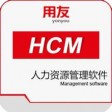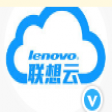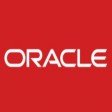
Oracle人力资本管理云
-

- 共 2人点评 稳定性: 4 兼容性: 4 功能: 4.5 价格: 3.5 服务: 4
您做好准备了吗? 那些不具备现代HR和人才战略的HR组织正在丧失为企业创造价值的能力。现代HR领导要打造非凡的员工体验,为客户和企业提供有力支持。
- 标签:人力资本管理 甲骨文 Oracle
- 厂商:Oracle
- 详情
- 资费
- 常见问题
- 点评
- 咨询
- 售后
Indeed in some situations, “bossless,” “self-managed,” or “flat” organizations work better than hierarchies. Researchers at the University of Iowa and Texas A&M followed 587 factory employees in self-managed teams and determined that this structure resulted in better performers, both for the teams and for individual team members.
Results like these have prompted a growing interest in flat organizations throughout the business world, with management embracing flatness in whole or in part. “People are recognizing the value of flat organizations,” says Dana Ardi, author of The Fall of the Alphas (St. Martin’s Press, 2013), which documents the shift toward more-collaborative, less-hierarchical organizations. “That has a lot to do with the cultural effects of technology and the millennials driving lots of things in the enterprise.”
Ardi also believes that this shift is powered by the egalitarian ways many of us now obtain information. The rise of the self-service-powered internet and the advent of crowdsourcing via social networks has changed consumer expectations of expertise and authority. Someone once would have turned to a guidebook or travel agent for vacation advice, Ardi explains. Now that person might instead consult peers on Facebook, Yelp, and TripAdvisor.
That same collective wisdom is what powers flat organizations and delivers some undeniable strength. Collective decisions can be made quickly and don’t move through management levels, making organizations more nimble and better able to respond to changing market conditions or opportunities. This structure allows decisions to leverage knowledge across the whole enterprise, Ardi says, leading to faster and better decisions.
Metrics are important everywhere but need to be more tangible and clearly communicated in a flat organization.Michelle Benjamin,
CEO, TalentReadyIn a traditional hierarchy, a shipping clerk makes sure packages go out on schedule. That shipping clerk has a boss who oversees the clerk’s work. In effect, two people are (at least partly) responsible for making sure packages get out on time. Assuming the shipping clerk’s boss reports to another manager, three people are responsible for the timely shipping of packages. And so on.
“There’s less redundancy in a flat organization,” says Michelle Benjamin, CEO of TalentReady, a talent management provider. The shipping clerk is the only one responsible for packages, reducing inefficiency by eliminating some overlap of responsibilities.
Making a Match At a practical level, this means flat organizations face particular hiring challenges. “Flat organizations need people who take the initiative to complete job tasks and responsibilities at standards that support the organization’s expectations,” Benjamin says. “Often this can be challenging.”
This is why getting hired at the famously flat tomato processor Morning Star Company is a complicated affair, says Paul Green Jr., who works at both Morning Star and the affiliated Self-Management Institute but has no title, since neither organization uses them. “If you apply, you have to meet with 12 to 18 people,” he says. “It’s a process, and it’s pretty intense. From the time you submit your résumé, it takes 4 to 12 weeks.”
What qualities make for a perfect flat organization member? “You could ask that question of any number of people and get a variety of answers,” Green says. “I’ve done a lot of research and we’ve tried to apply statistical analysis, and I don’t know how to identify what the perfect person is. We tell people we treat it a little like courtship—are we in love with each other? There’s no formulaic way to fall in love.”
There are no employees at Morning Star: only colleagues. And only the company’s founder, Chris Rufer, has the legal authority to fire. “But it’s not something he uses,” Green says. “People choose to become part of an organization because they believe it will make their life better, and they’ll only engage fully if they commit fully to the organization. That will only happen if they feel there’s a reciprocal commitment back to them.”
Once people are on board, flat organizations make better use of their talents, and do a better job of developing those talents, according to Ardi. “It’s not about one manager taking responsibility for developing the members of a team,” she explains. “So it creates a system where a team member has to take responsibility for his or her own career. It gives them the opportunity to work with different people with different skill sets from different project groups.”
Without a formal top-down reporting structure, team members are more likely to collaborate with subject matter experts (instead of managers). And without fear of boundary conflicts, experienced team members are free to provide guidance. “It allows for more mentorship and sponsorship of talent,” Ardi says. “Organizations can turn up the volume on employees’ skills, and senior members can bring along the next generation.”
To measure staff success, flat organizations must be more metrics-driven than their hierarchical counterparts. “Metrics are important everywhere but need to be more tangible and clearly communicated in a flat organization,” Benjamin says. “Measurements need to be clearly defined so everyone can work on the same goals.”
Green concurs, pointing out Morning Star’s business objective is to be the cost leader in a commodity business. That means consistent, efficient operations have a significant impact on profitability. To that end, Morning Star is always analyzing everything, he says. “We measure processes and continually do improvements.”
Flat-Out Results But how do decisions get made? Morning Star, which has been bossless since its founding in 1970 and now has 400 colleagues year-round and as many as 2,400 during tomato season, uses the flat approach—decisions are made by agreement, with subject-matter experts taking the lead.
“Everyone has the same exact purchase authority as everyone else, and you’re free to use whatever resources you need so long as you can, in your judgment, validate that you’ve involved the people who will be affected, as well as those who have meaningful expertise,” Green says.
What if colleagues disagree with each other? “The first step is to try to resolve things directly,” Green says. “‘I think you should be doing X and you’re doing Y.’” This is enough to solve a surprising number of problems, he adds.
If that doesn’t work, the next step is to bring in a neutral third party to add an independent viewpoint. If the conflict remains unresolved, the parties assemble a panel of up to 10 Morning Star colleagues. The parties work together to find a compromise, perhaps performing a test or seeking more information. If all else fails, Rufer, the company’s founder, is asked to join the panel, mainly as a facilitator. “First and foremost, he helps the original two colleagues reach agreement,” Green says.
It’s tough to argue with Morning Star’s success: Started with one truck, it’s grown to become the world’s largest tomato processor. The staff have kept operational costs down while increasing compensation (set by elected committees and based on performance metrics) above the industry average. The lower cost and higher pay come in part from savings on expensive manager salaries and perks.
Have It Both Ways If a big bang approach to flat sounds too disruptive, there are ways to experiment without completely rewriting the rules. “If you’re not getting the results you want, that’s the perfect time to try something different,” Benjamin says. Her company maps efficiency processes for clients, and she has found that a breakdown in a process provides a good opportunity to create a flat organization around it.
When management faces a serious challenge, it’s time to think flat, says Randy Ottinger, executive vice president at Kotter International, a strategy consulting firm. Ottinger believes that a dual operating organization can retain a hierarchy but can increase agility by encouraging employees to join a self-managed network focused on innovation. “Their whole objective is to find ways to move the organization forward faster,” says Ottinger.
400
Number of full-time “colleagues”who work in flat organization Morning Star, the world’s largest tomato processorIn one case, he says, a pharmaceutical firm faced a patent crisis as brand-name drugs became available to generic competitors. Management needed new products to replace the lost revenue. Using a broad-based employee innovation network, the company launched more than 20 significant sales and productivity initiatives within a year.
One of these was to help the sales team by consolidating enterprise databases inherited by the company via acquisition. “It took an extraordinary amount of time for reps to access the data they needed from the road,” Ottinger says. So IT created an app that gave salespeople instant access.
Another approach is to have a “distributed decision-making” group operate within the traditional hierarchy. That approach makes sense in our rapidly evolving world, says Kirsten Hanson, senior director of global organization and talent development in Oracle’s Human Resources division. “As we move toward complex adaptive systems, they require nonlinear decisions,” Hanson says.
Hanson says that’s what works best for her own team, which uses Oracle Social Network Cloud Service to solve work challenges. “If it’s a decision I need to make, others come to me with all the background and say, ‘Here is what we learned, and here are a couple of possibilities.’ And we can make a much more informed decision,” she says.
Hanson wrote her PhD dissertation on complex adaptive systems and talked to US Navy SEALs in the course of her research. The US military is a quintessential top-down organization, but SEALs sometimes must work in a self-managed model. “When they’re out there on the job, they have to work as a distributed force,” Hanson explains. “They’re a network of people with different specialties all tapping each others’ knowledge.”
To take that approach is to recognize a simple truth, she adds. “Leaders don’t always have all the answers. It’s a mistake to think they ever did.”
Minda Zetlin is coauthor, with Bill Pfleging, of The Geek Gap: Why Business and Technology Professionals Don’t Understand Each Other and Why They Need Each Other to Survive (Prometheus Books, 2006).






